This article shows steps on how to set up the OpenID integration that allows users to log in with Microsoft Azure AD.
Before creating this configuration, please:
- Make sure that you have an account created for Microsoft Azure AD (you can request a global admin role) and login https://login.microsoftonline.com/
- Go to the https://aad.portal.azure.com/
Create the new OpenID configuration
When you log in to the YTM application, navigate to the:
- “System” page.
- Choose the “Integrations” option.

When the page opens, go to the:
- “OpenID settings” tab.
- Click on the “Add new OpenID configuration” button to create a new configuration.

The pop-up window will appear.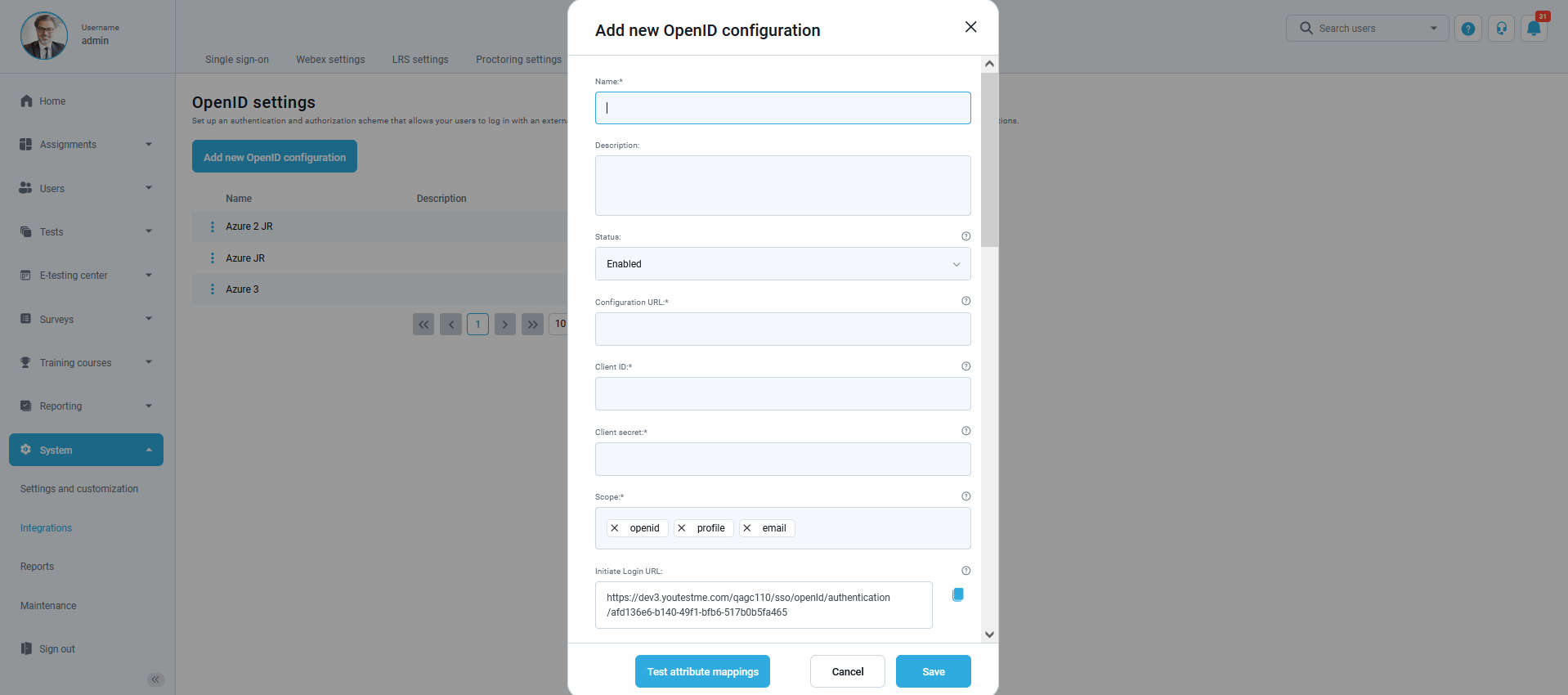
How to fill in the mandatory fields
-
- “Name” – Enter the name you choose for the configuration.
- “Configuration URL” – Go to the https://aad.portal.azure.com/ and create the new registration following the steps from the picture below:
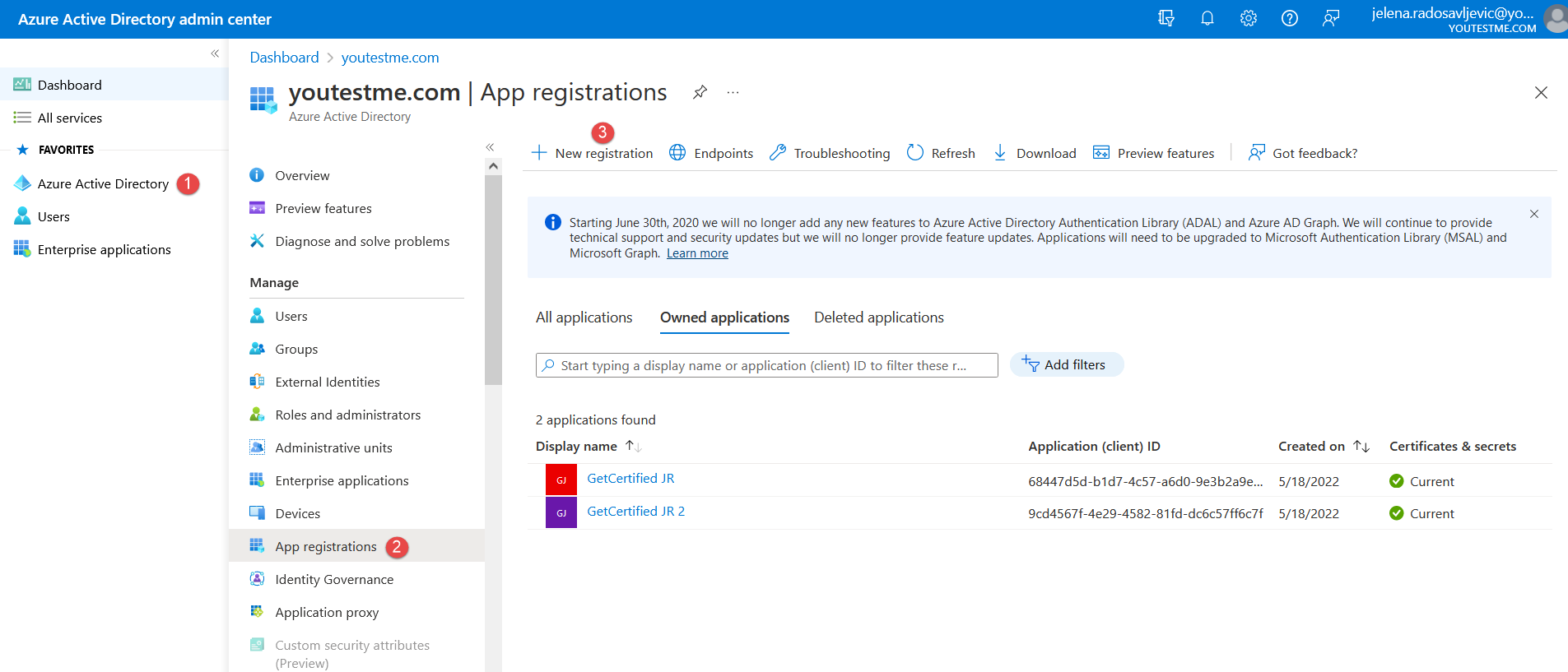 Give the name to the new registration and confirm it with the “Register” button below (as in the picture below):
Give the name to the new registration and confirm it with the “Register” button below (as in the picture below): 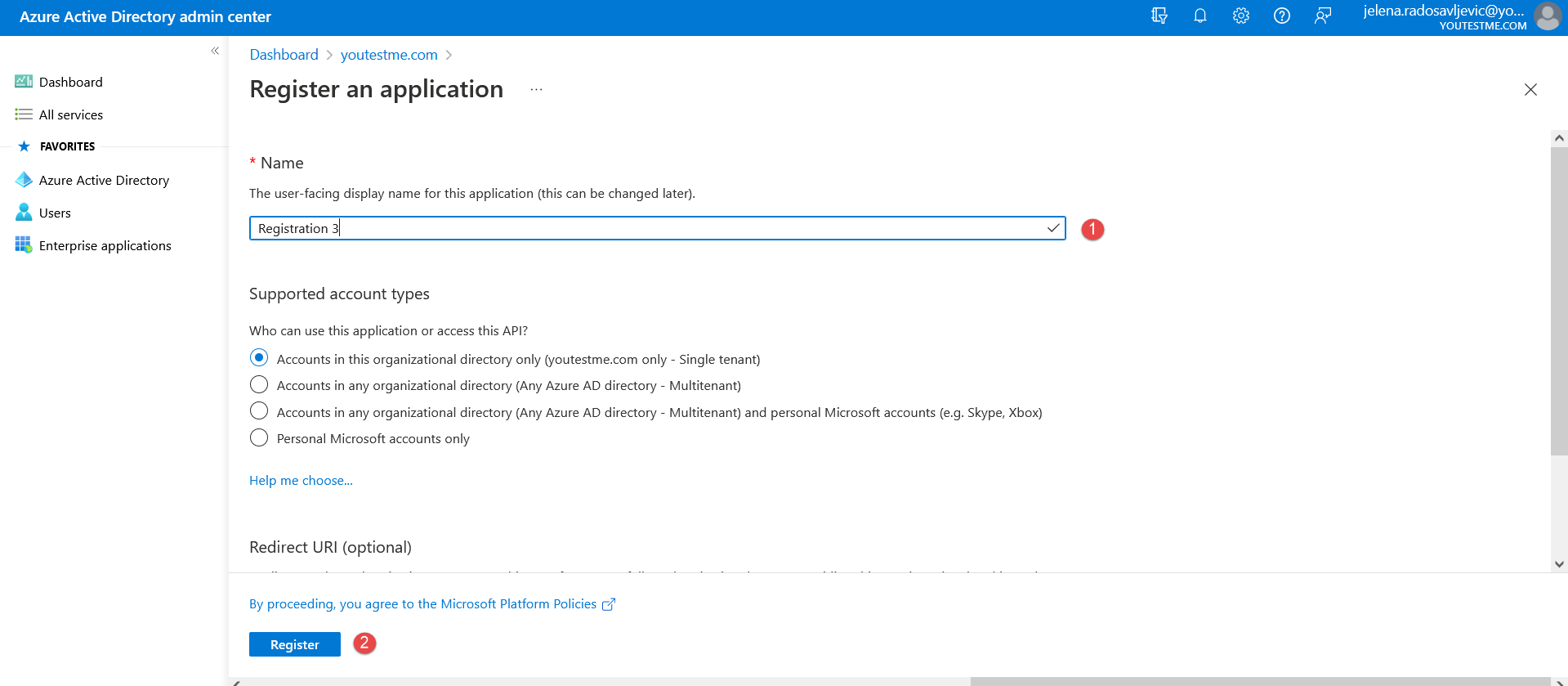 Now when the registration is created, navigate to the “Endpoints” to copy the “OpenID Connect metadata document” (as in the picture below):
Now when the registration is created, navigate to the “Endpoints” to copy the “OpenID Connect metadata document” (as in the picture below): 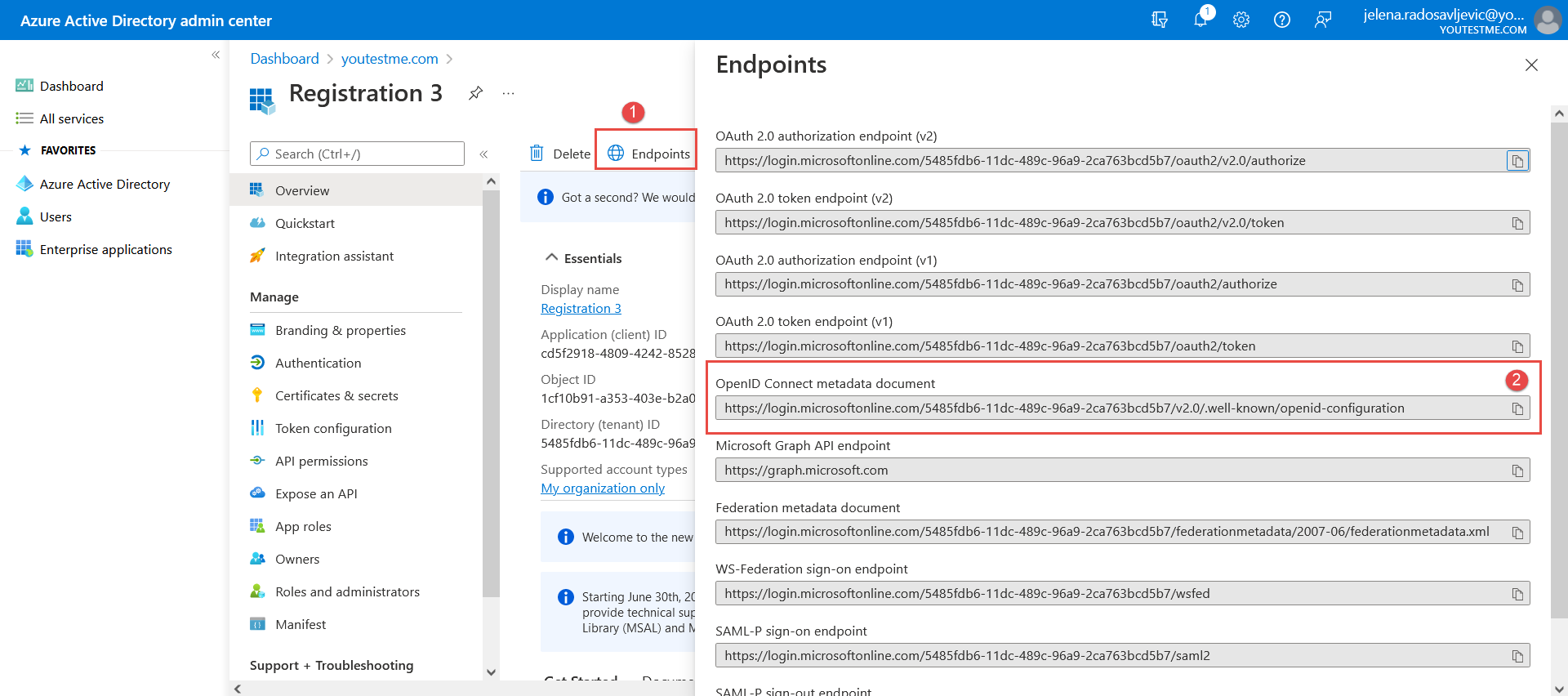 Paste the URL into the “Configuration URL” field in the YTM application.
Paste the URL into the “Configuration URL” field in the YTM application. - “Client ID” – Copy the data from the “Application (client) ID” field (as in the picture below):
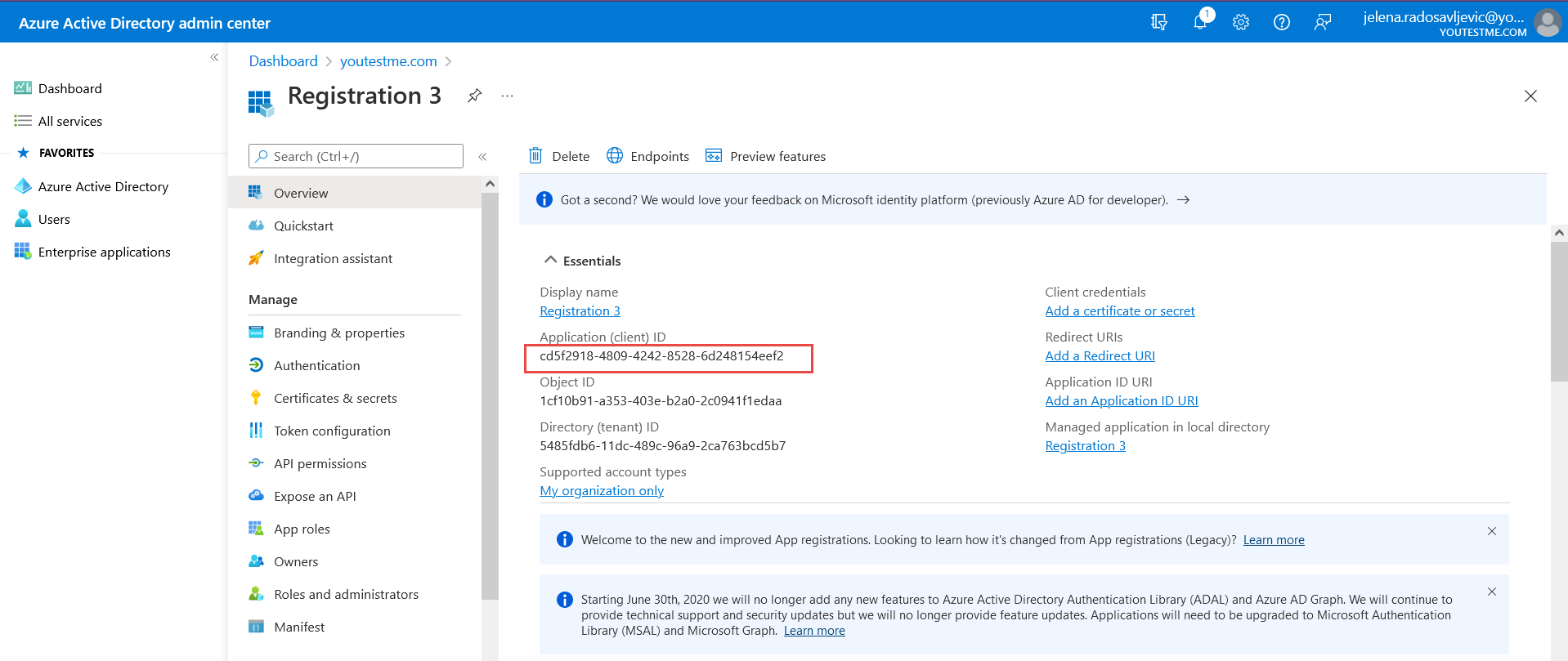 And paste it to the “Client ID” field in the YTM application.
And paste it to the “Client ID” field in the YTM application. - “Client secret” – To create it, follow the steps from these pictures below:
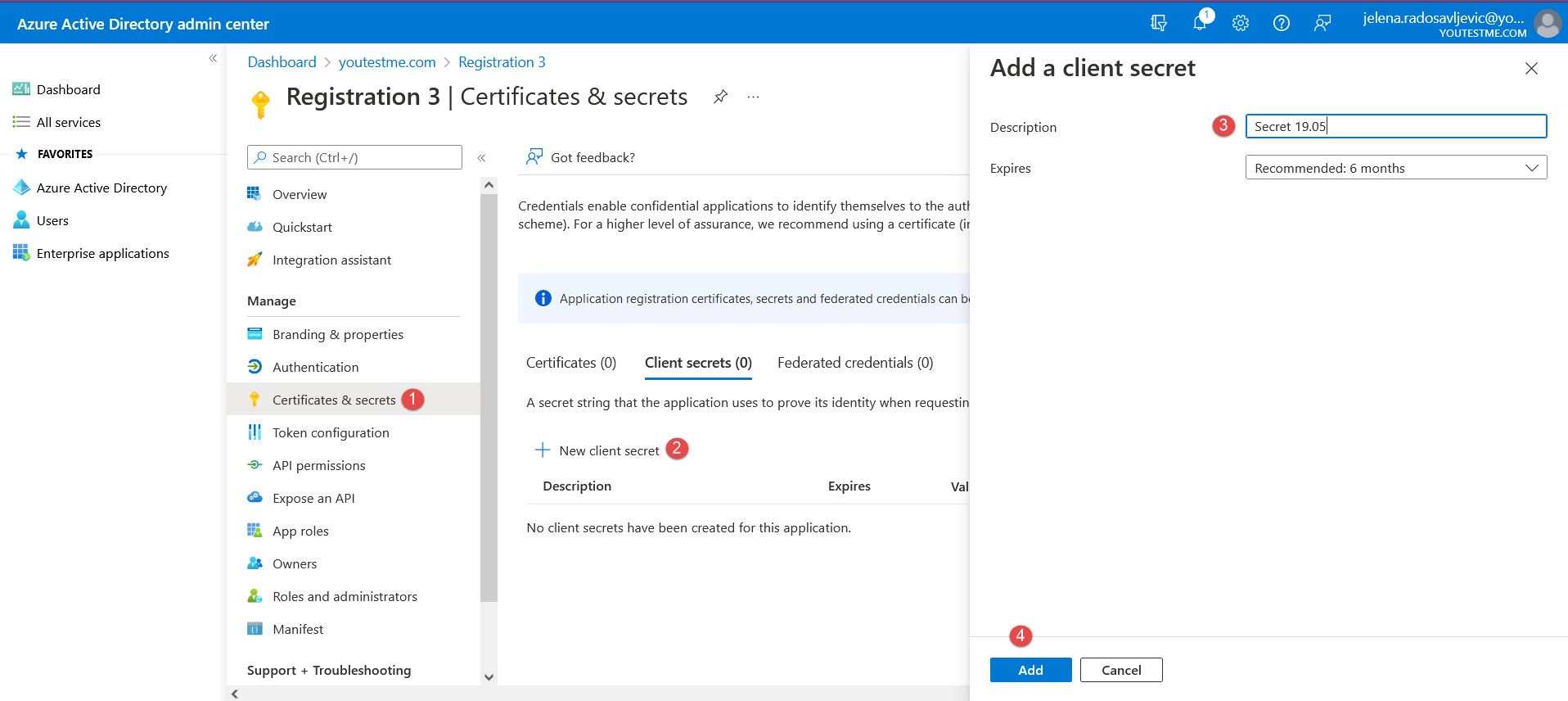 Once the “Client secret” is created, copy the “Value”:
Once the “Client secret” is created, copy the “Value”: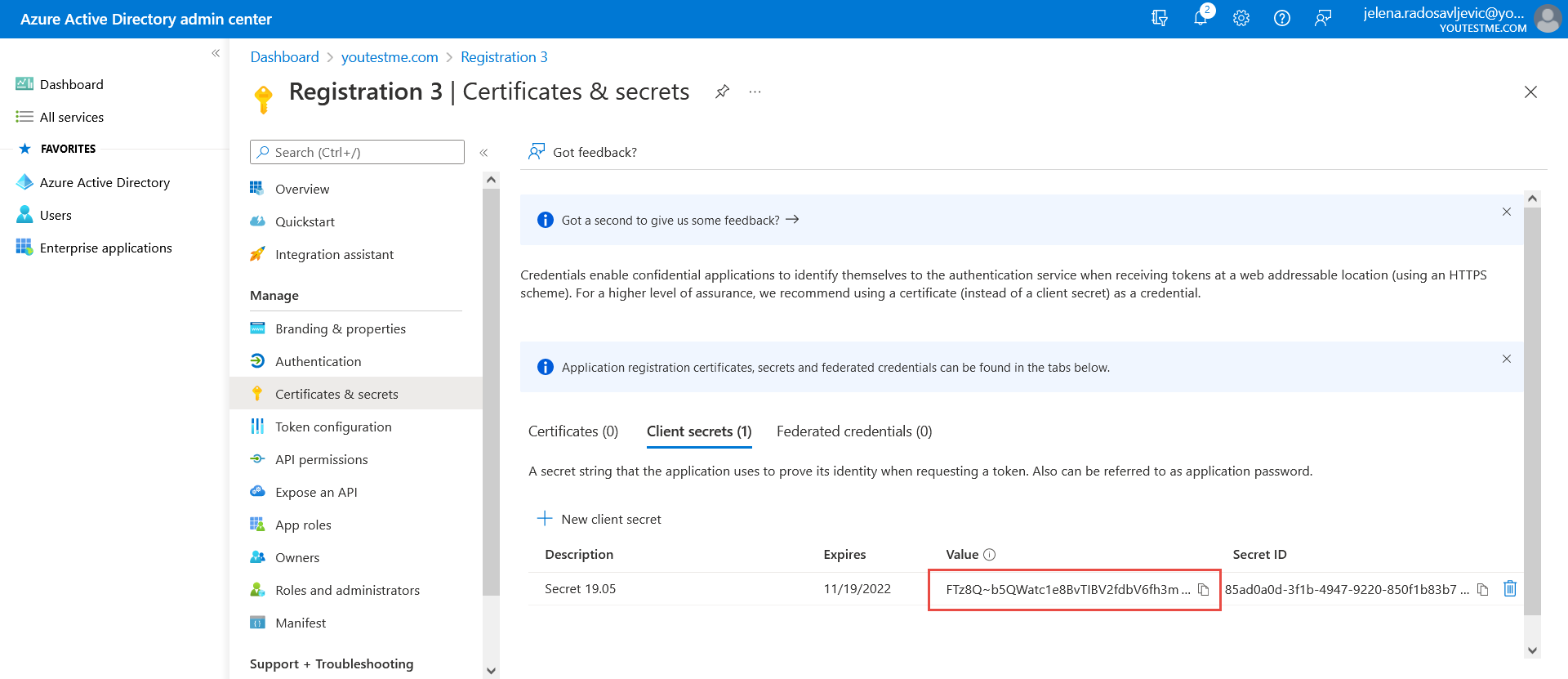 And paste it to the “Client secret” field in the YTM application.
And paste it to the “Client secret” field in the YTM application. - “Scope” – We already have predefined scope values in the YTM application:
 Which we need to confirm in Microsoft Azure (as in the picture below):
Which we need to confirm in Microsoft Azure (as in the picture below):
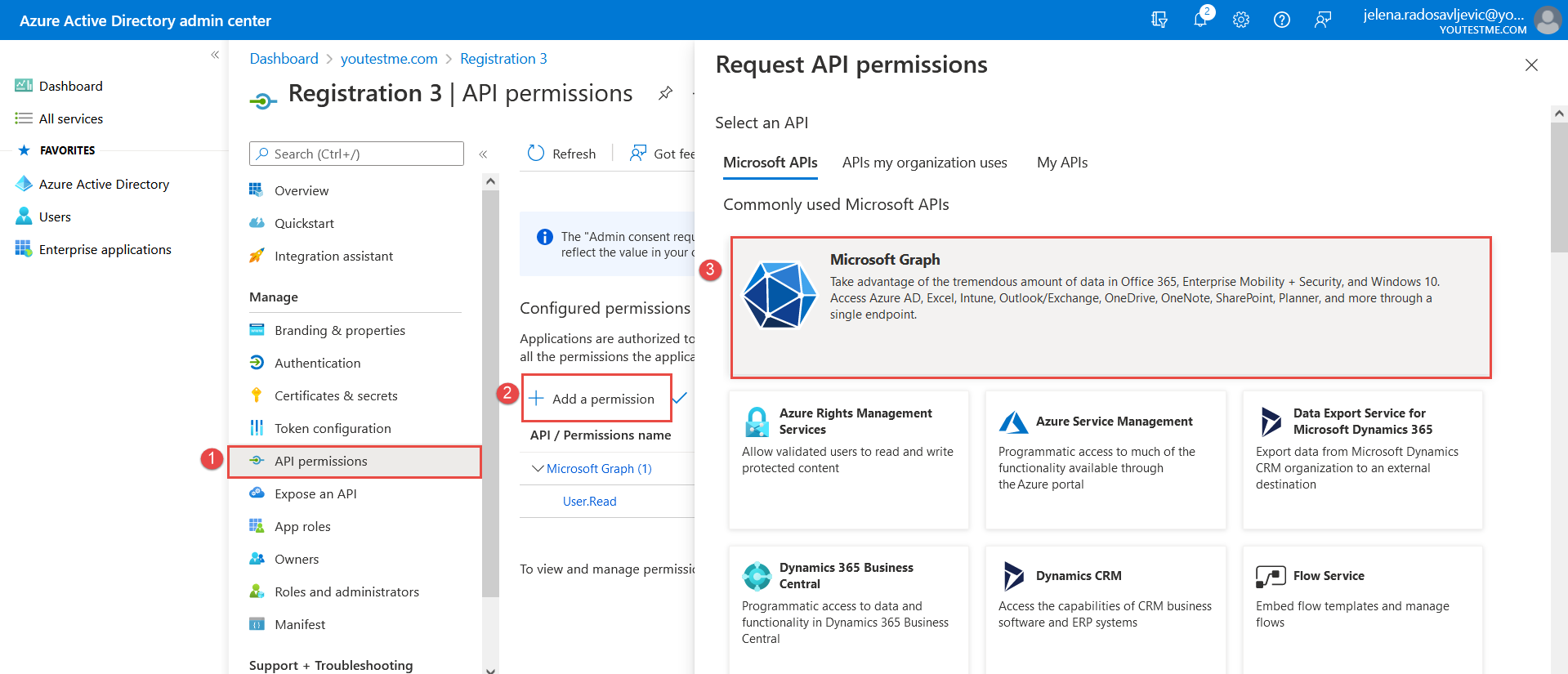
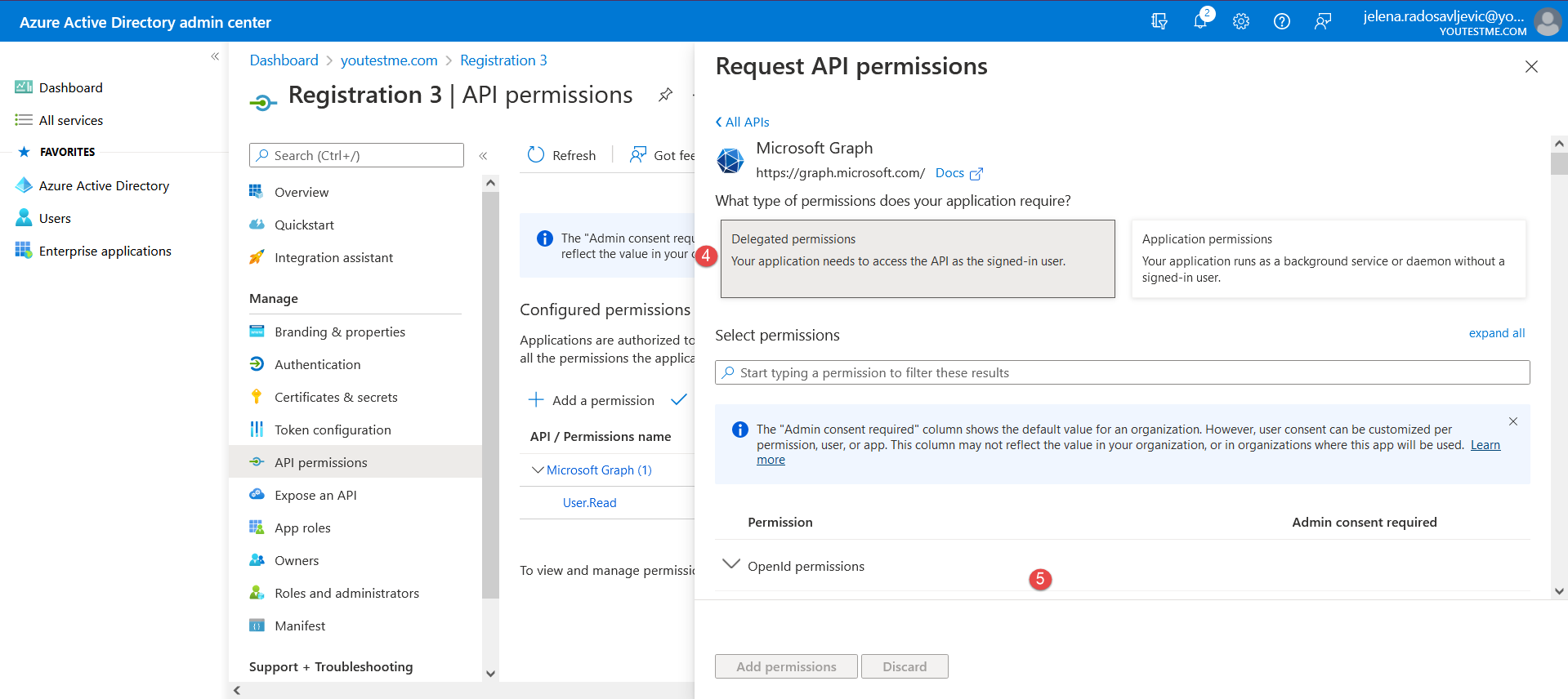
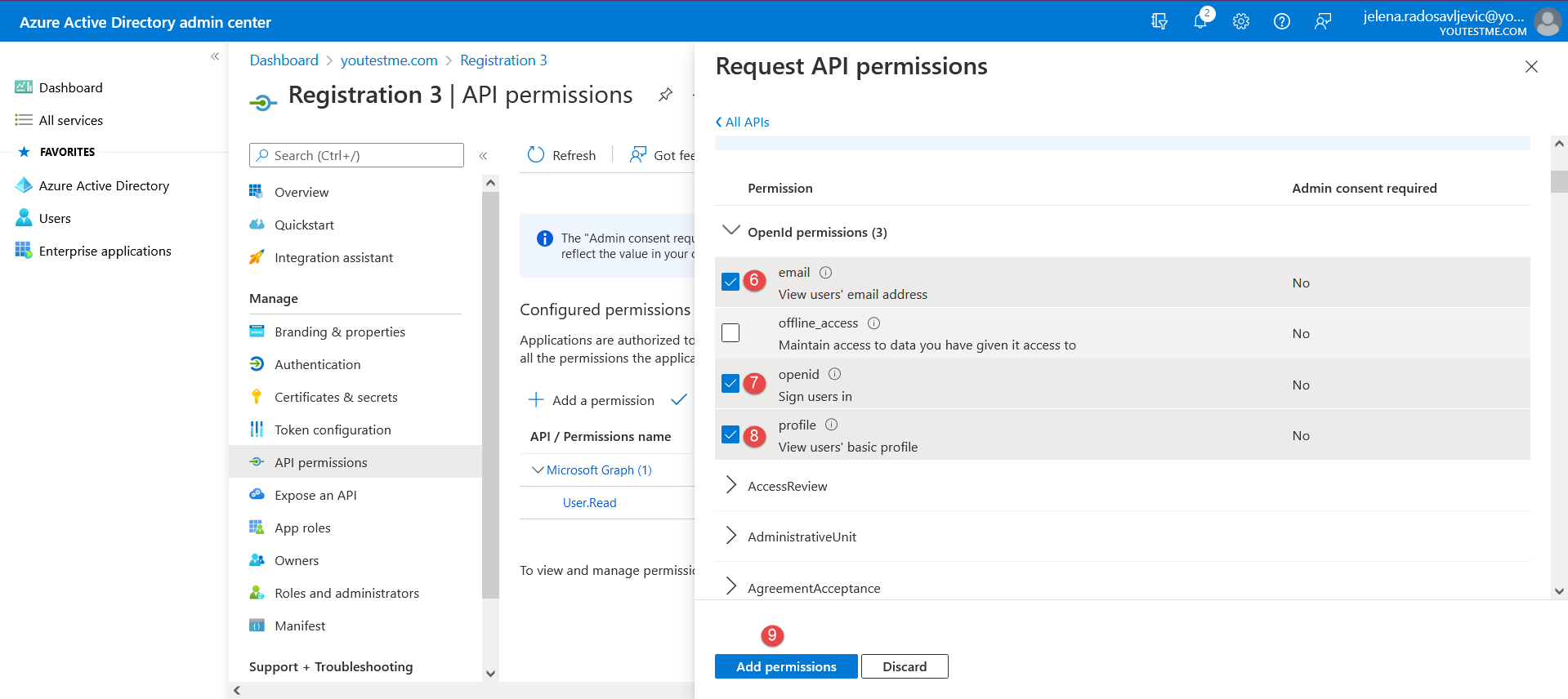 After you add permissions, it should be displayed as below:
After you add permissions, it should be displayed as below: 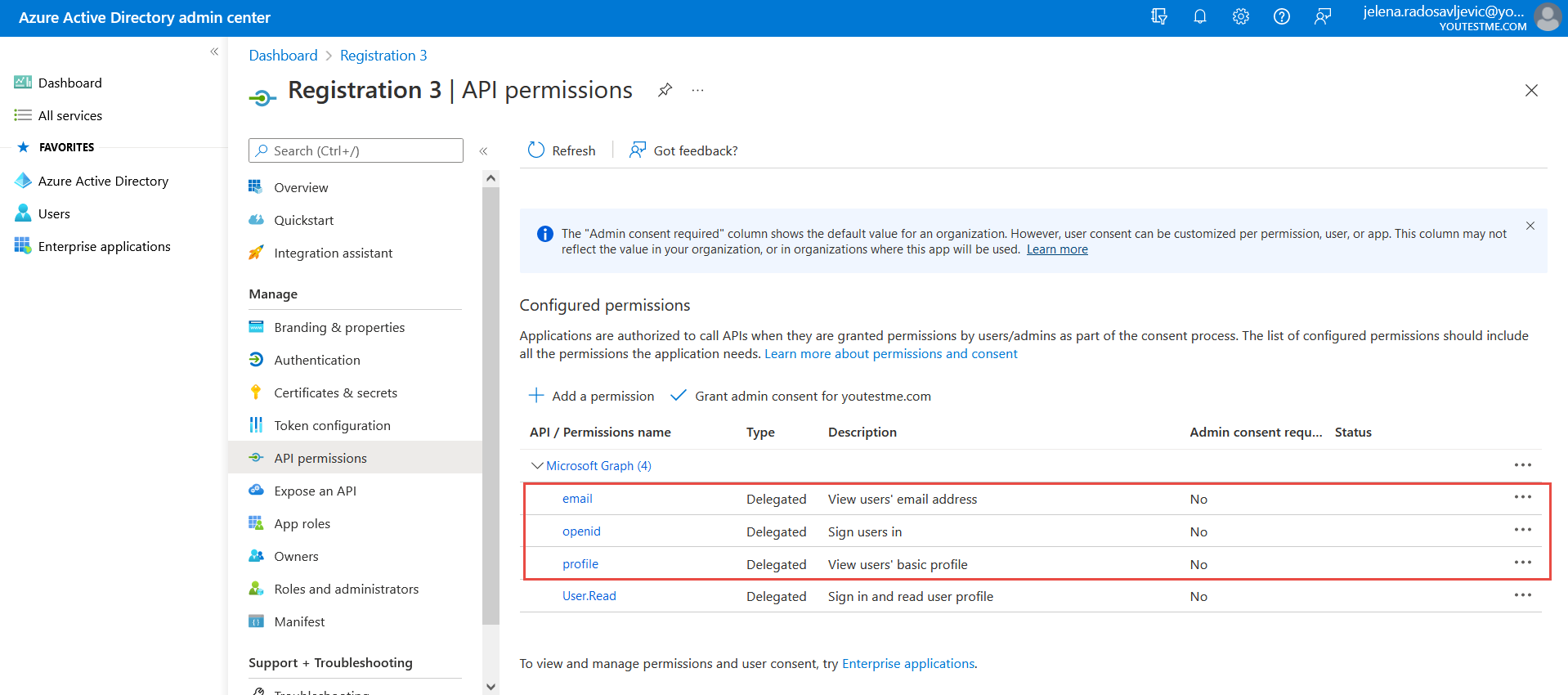 Now, you need to set “Token configuration” in Microsoft Azure and choose the “Optional claims” and “Groups claim”.
Now, you need to set “Token configuration” in Microsoft Azure and choose the “Optional claims” and “Groups claim”.
Optional claims: To add “Optional claims”, follow the instructions from the picture below: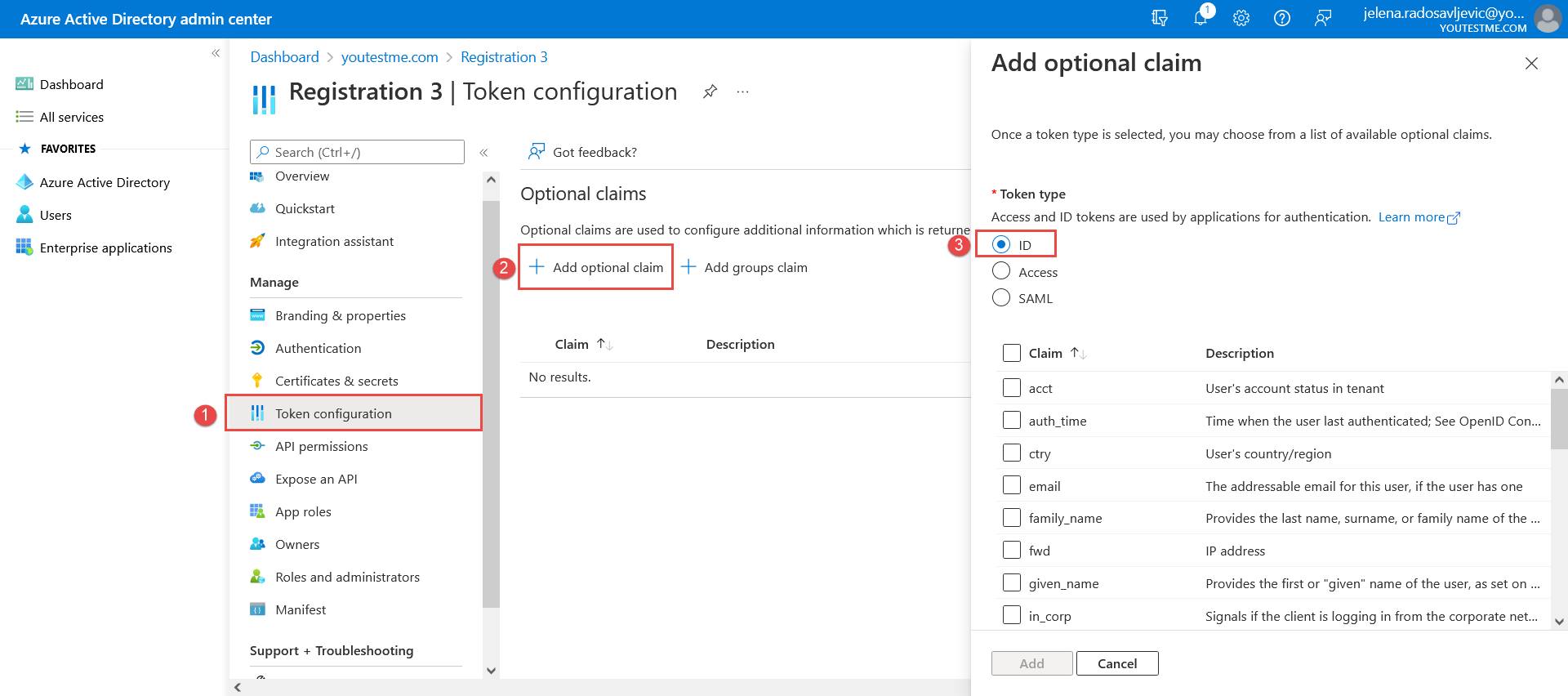 And choose the next claims:
And choose the next claims: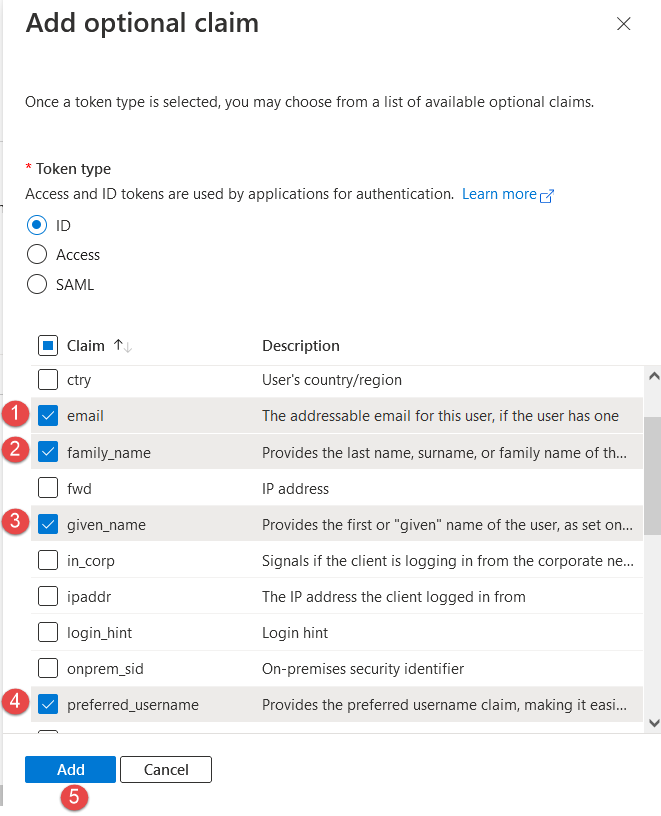 Groups claim: Set the “Groups claim” by following the steps from the image below:
Groups claim: Set the “Groups claim” by following the steps from the image below: 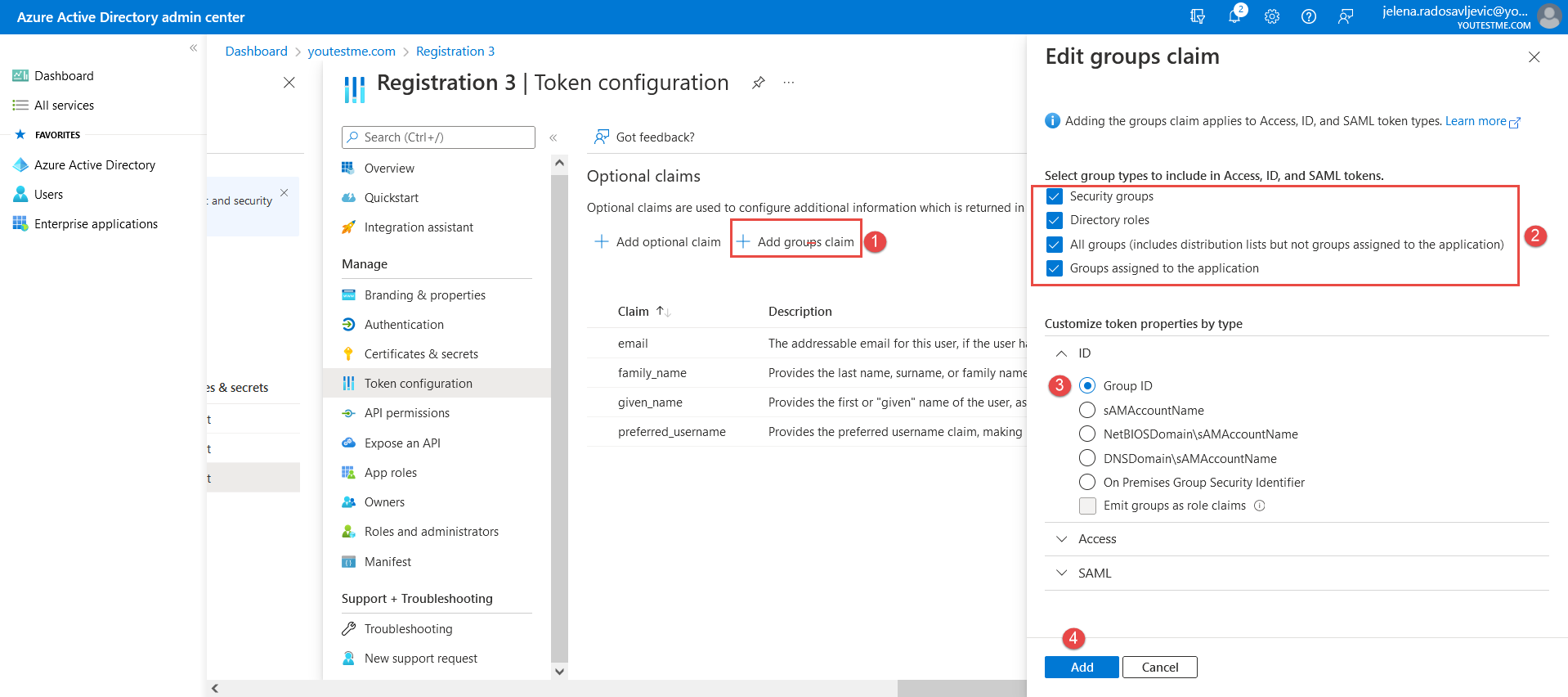 Once you have set all claims, you can continue filling in the mandatory fields in the YTM application.
Once you have set all claims, you can continue filling in the mandatory fields in the YTM application.
- “Username attribute” – Copy and paste this value: id_token.preferred_username
- “Email attribute” – Copy and paste this value: user_info.email
- “Callback URL” – The data that we integrate into Microsoft Azure, by following these steps:
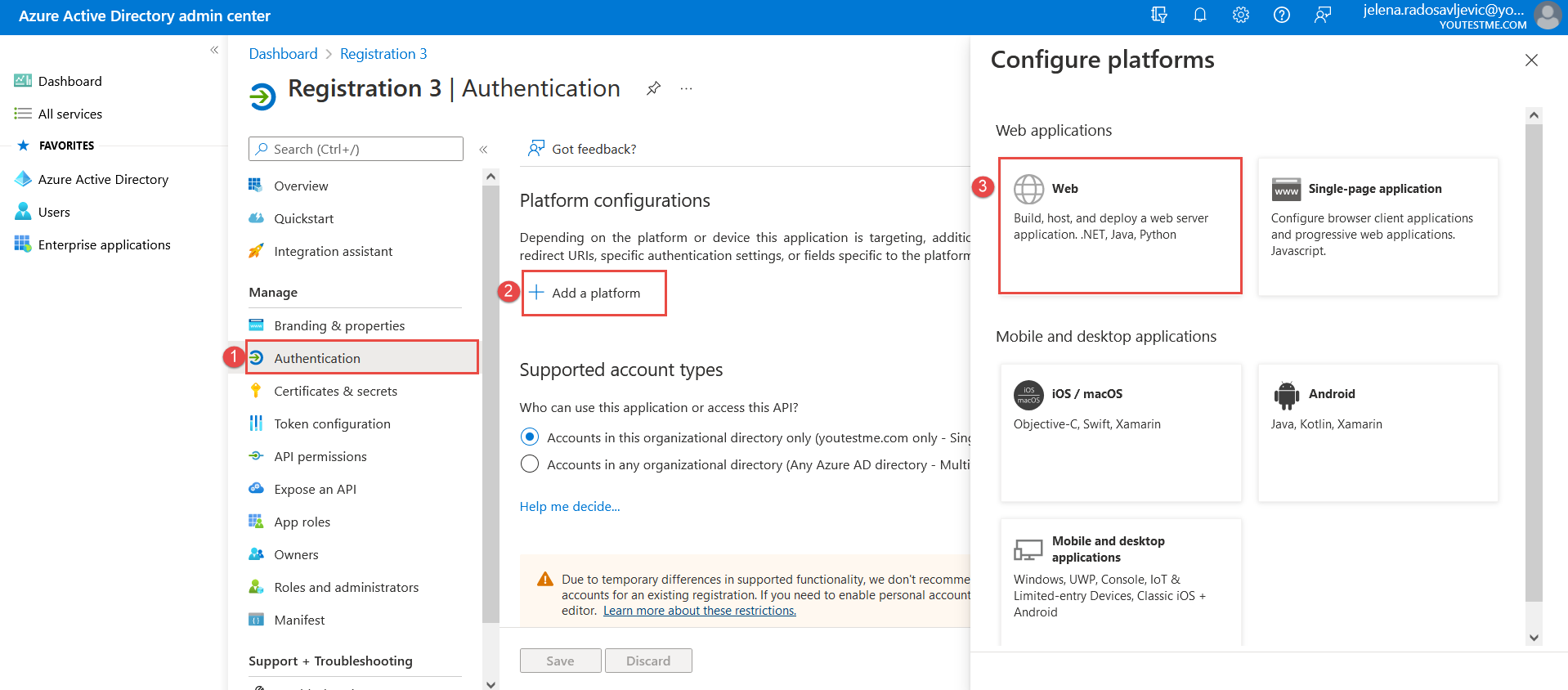 And paste the “Callback URL” from the YTM application into the Microsoft Azure application:
And paste the “Callback URL” from the YTM application into the Microsoft Azure application: 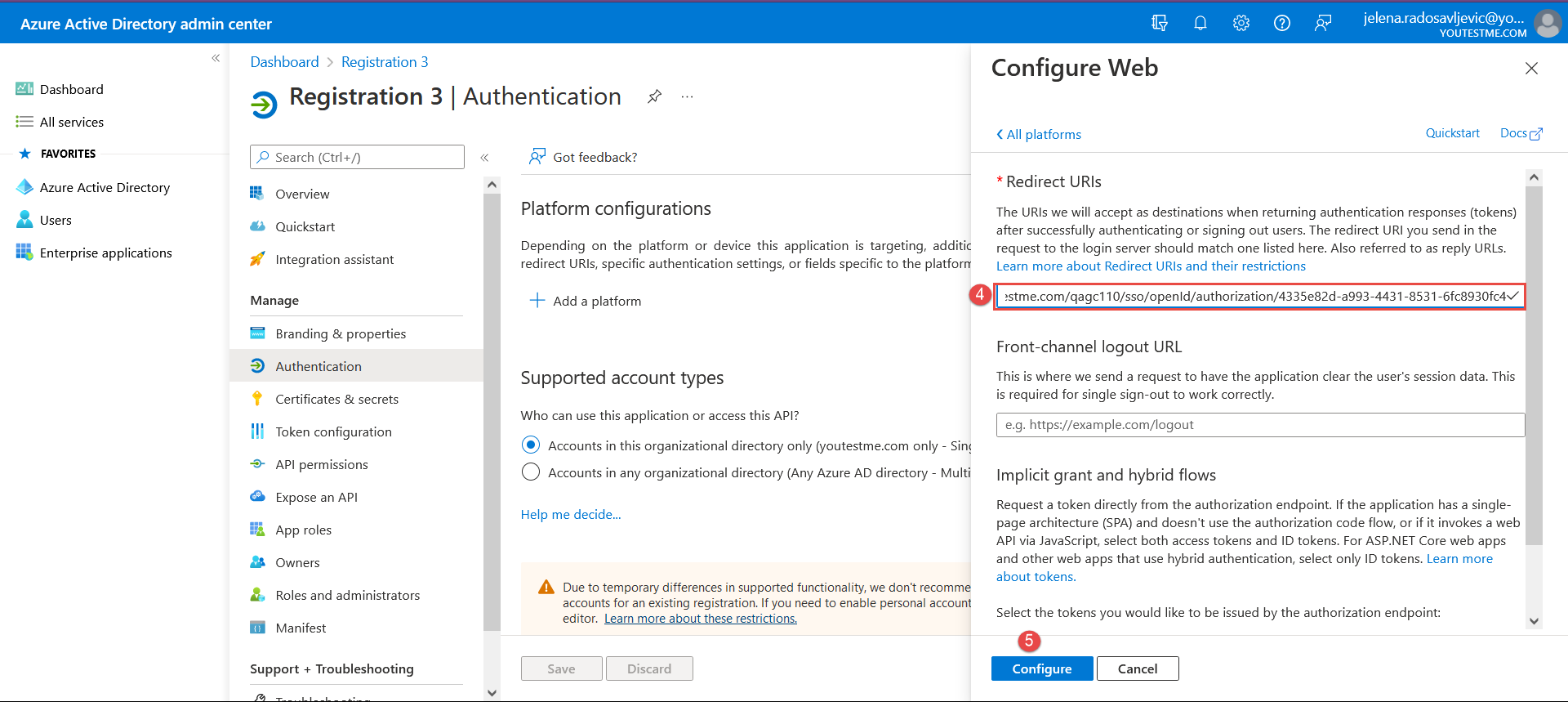
- “Role code attribute” – Copy and paste: (id_token.groups.indexOf(‘f4affda8-ff1e-4fbe-a2a1-4e89bf68d71b’) !== -1) ? ‘ADM’ : ((id_token.groups.indexOf(‘0a28e788-da40-4992-8a94-f082cd51167f’) !== -1) ? ‘GST’ : ((id_token.groups.indexOf(‘f71d0c2b-4068-49d5-a4ad-74954a9a94f3’) !== -1) ? ‘INS’ : ( (id_token.groups.indexOf(‘2d46d52e-2c4f-431c-9f26-ecc8caf66bfe’) !== -1) ? ‘PRC’ : ( (id_token.groups.indexOf(‘7c5debd8-20f6-401d-8878-77440f034d96’) !== -1) ? ‘TST’ : ‘ATT’ ))));
- “Status code attribute” – Copy and paste: ‘ACT’
After you add all of the mandatory fields, click on the “Save” button to save the configuration.
Student’s perspective
Students can choose to sign in with the newly created OpenID: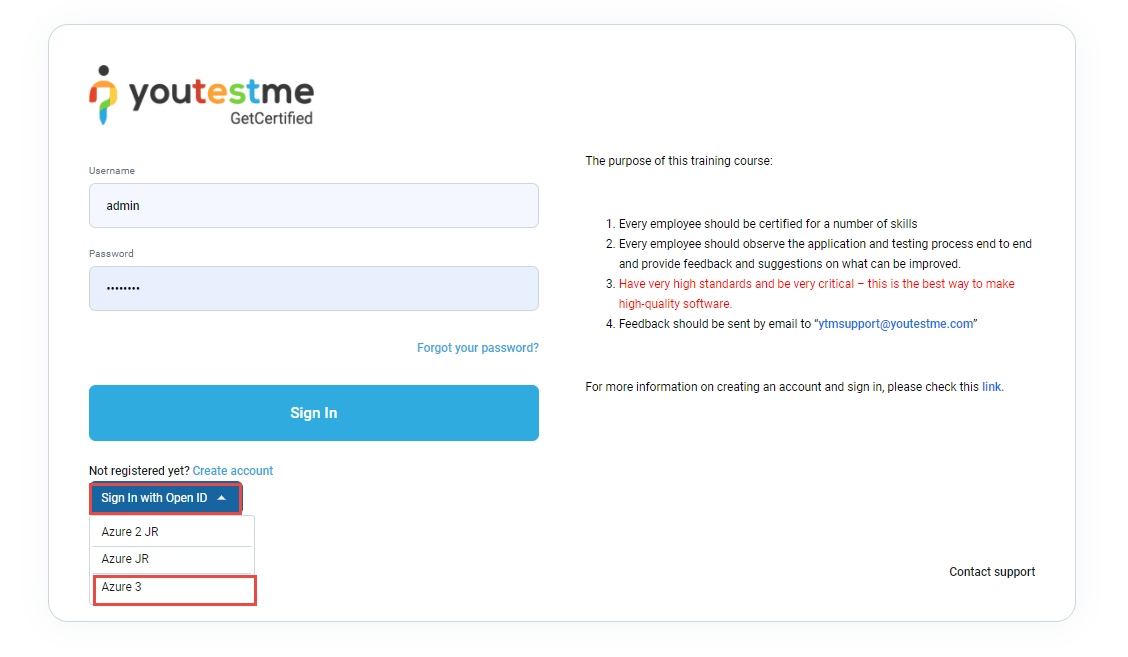
These are the first-time login steps: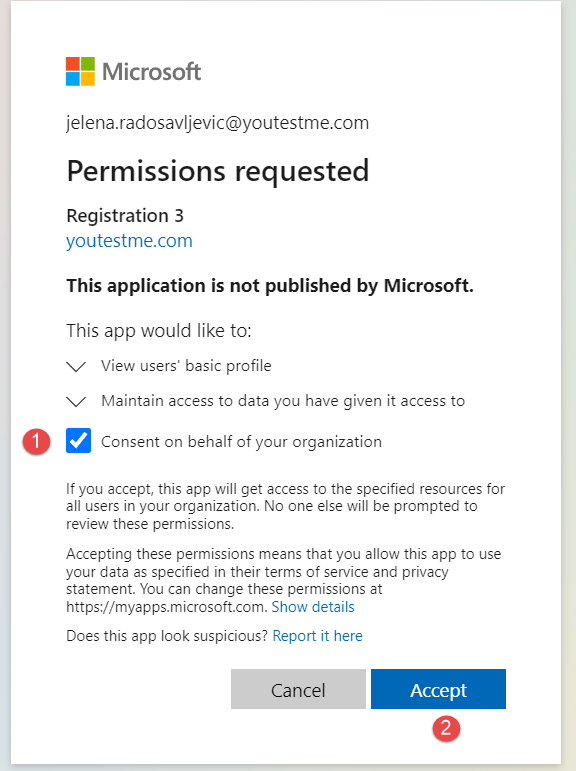
Once the student has passed the validation steps, he will be directed to the YTM application.
NOTE: Please contact our support team at support@youtestme.com if you have trouble configuring your OpenID configuration.
For more related instructional materials, please visit:




